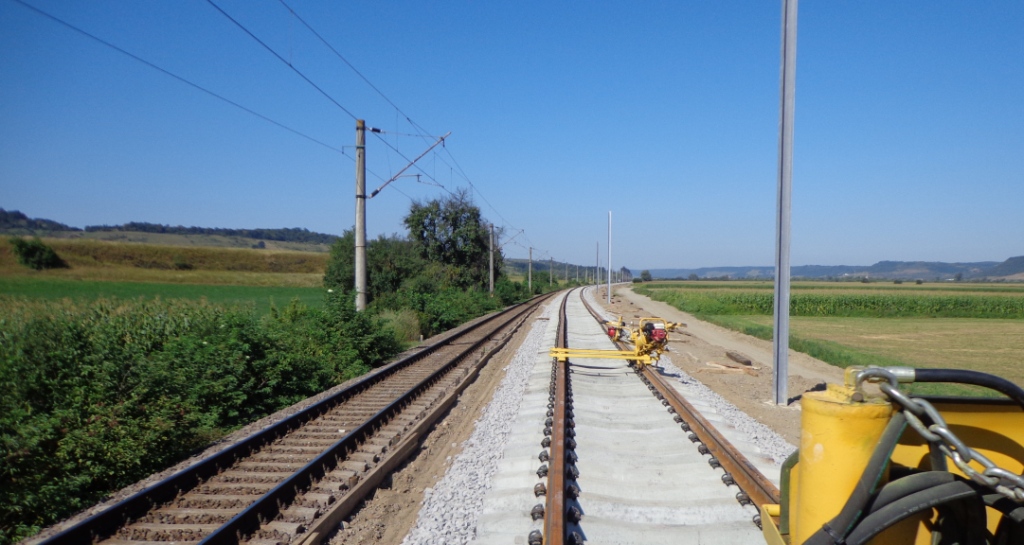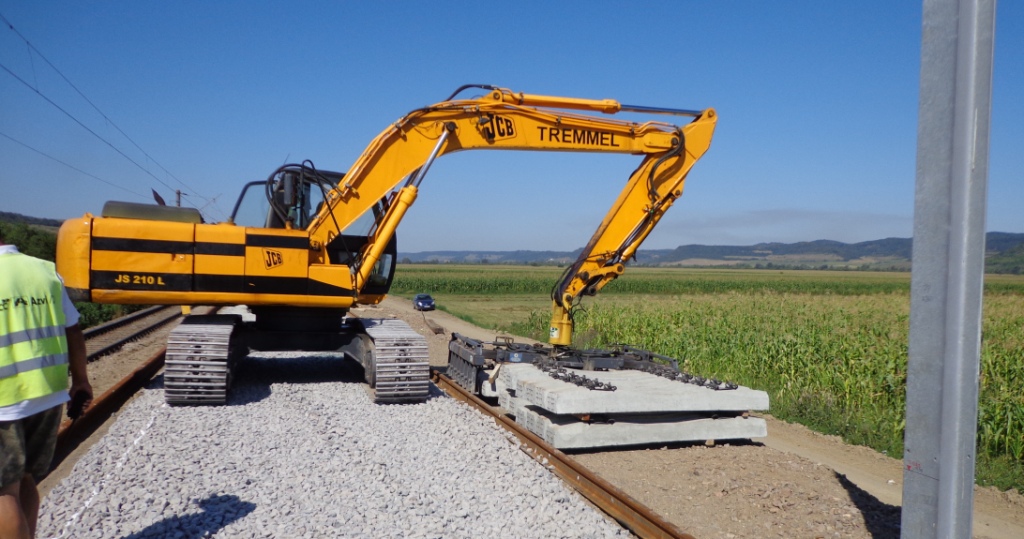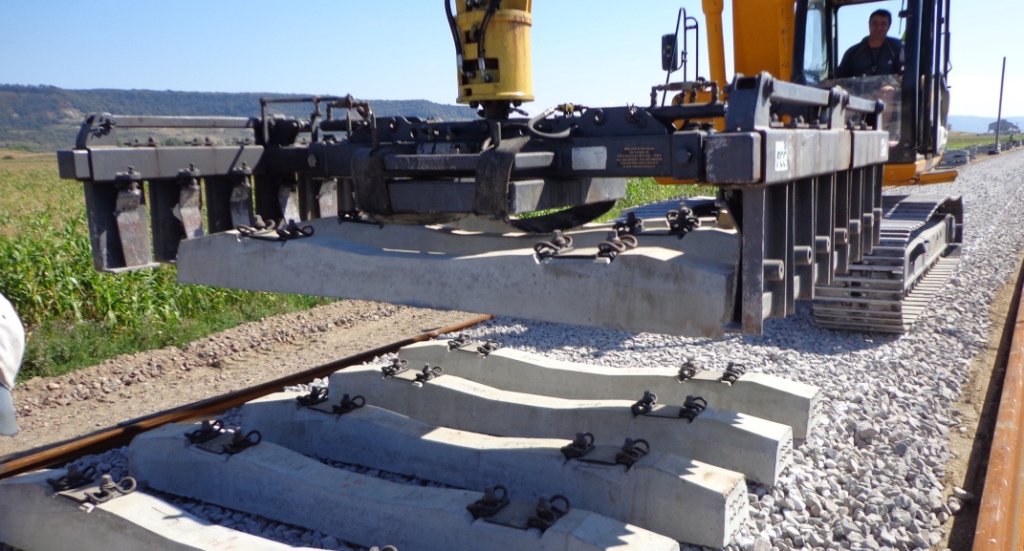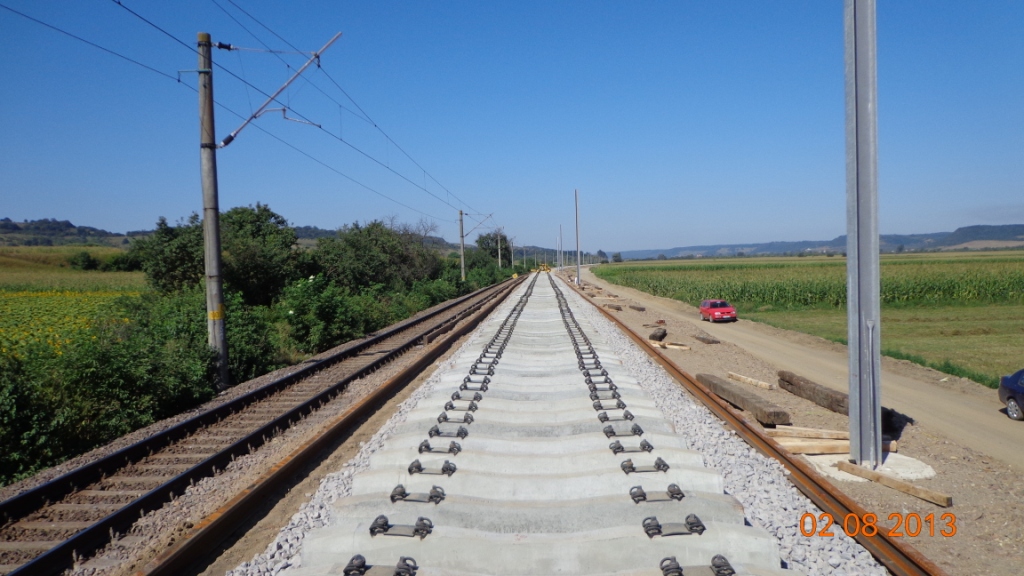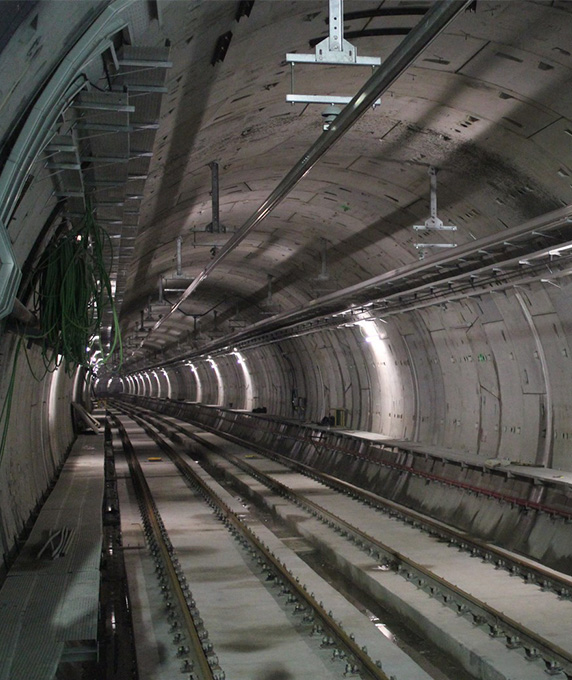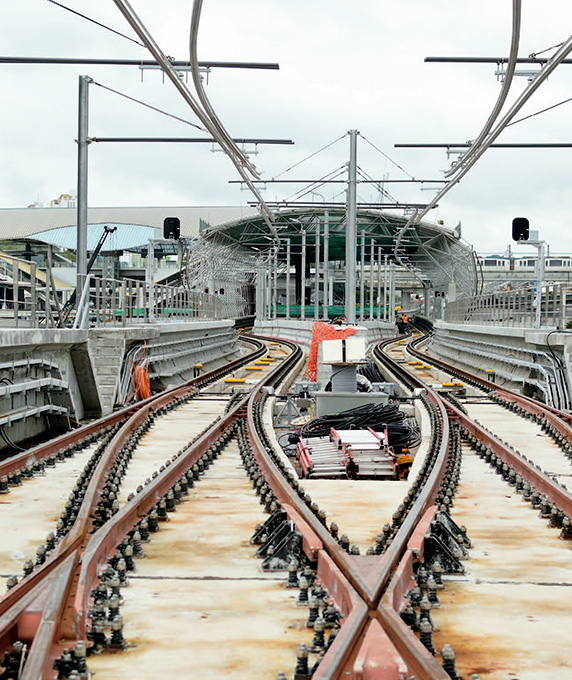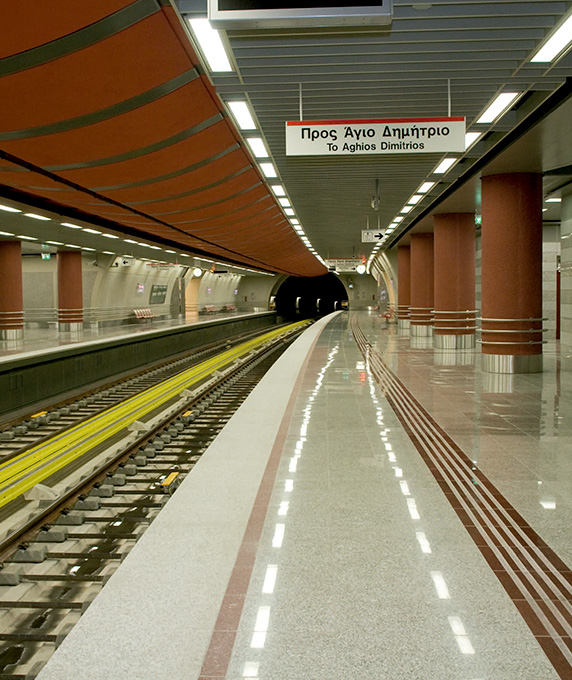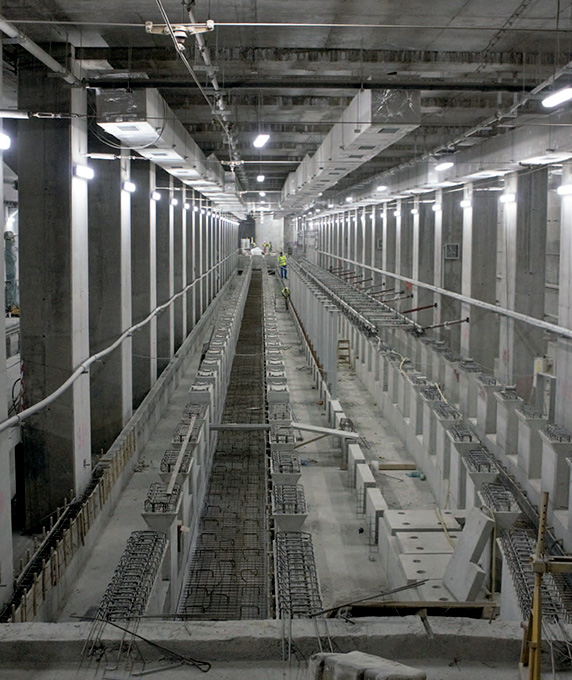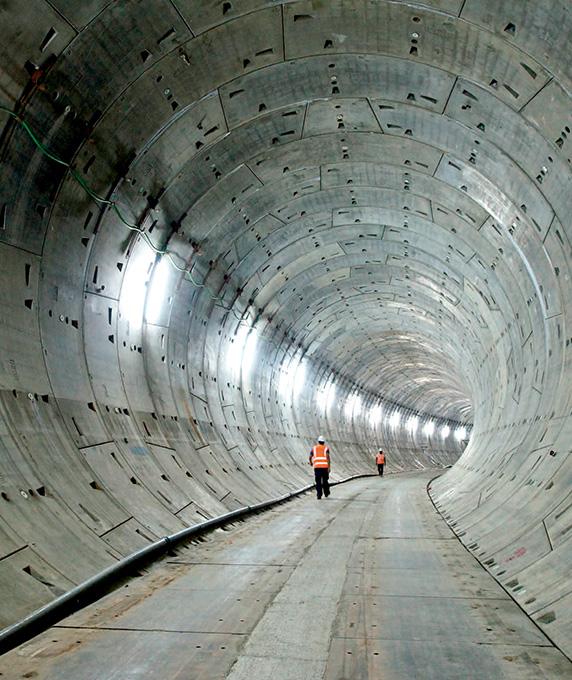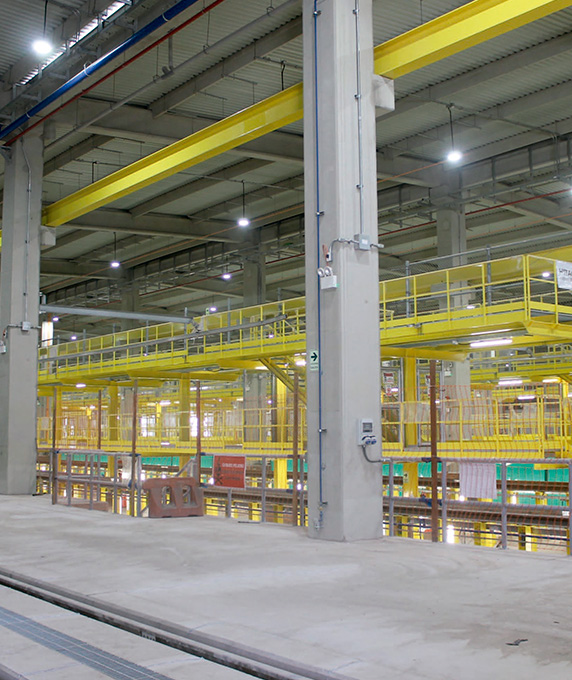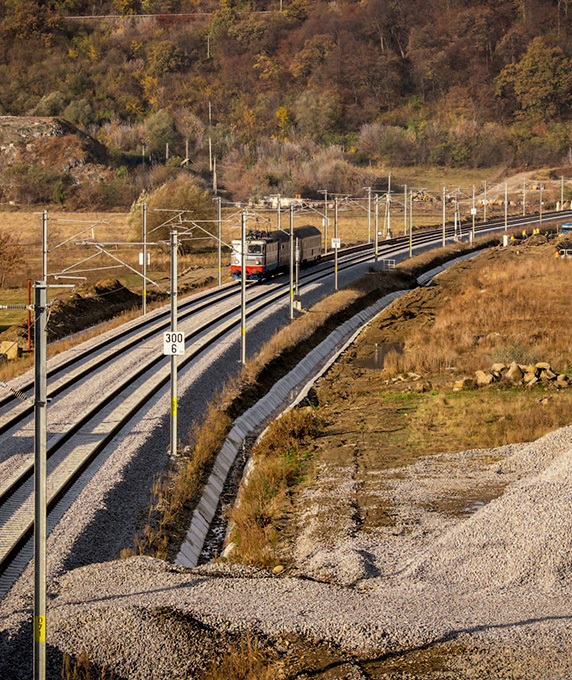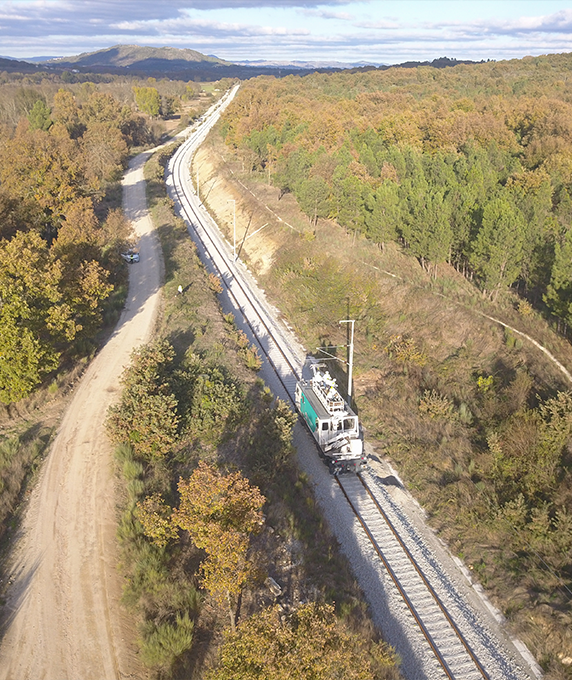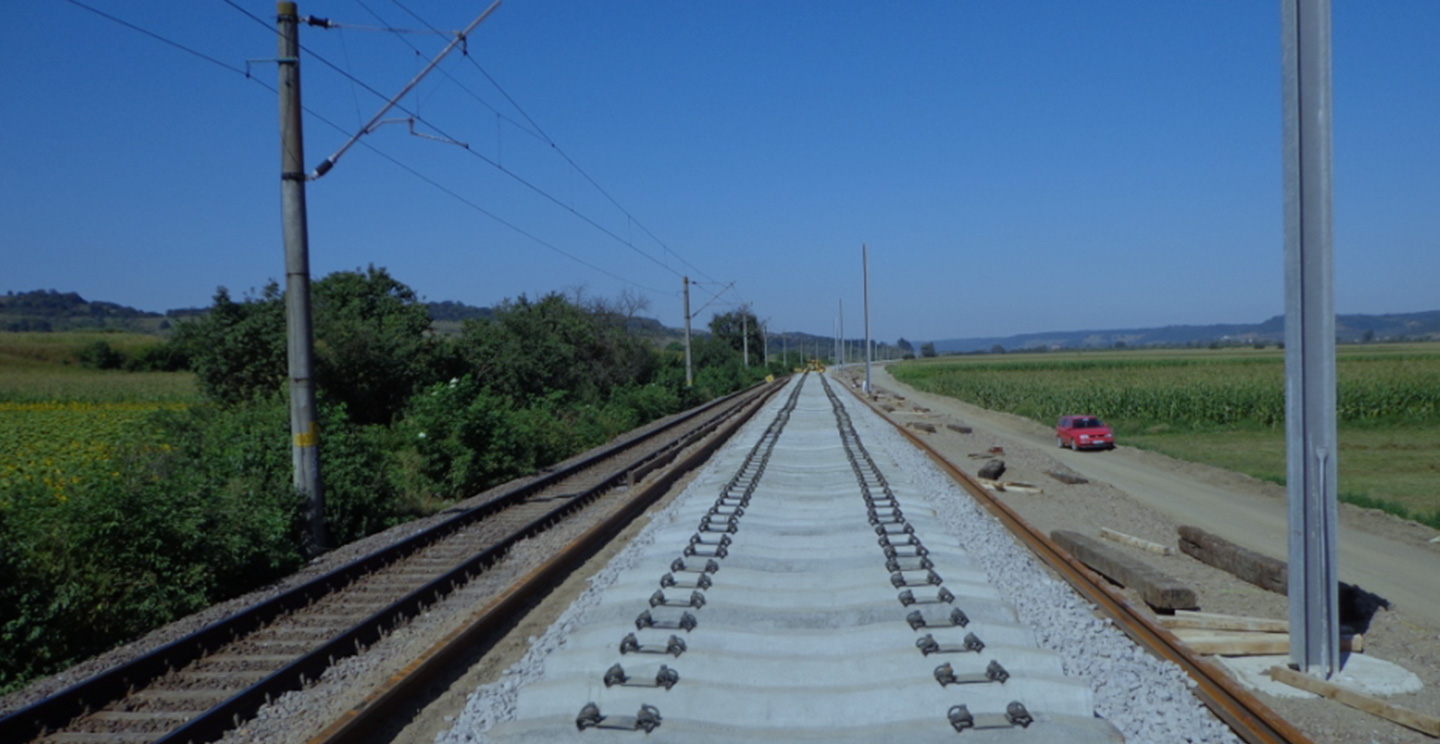
Type of work
Railways
Railway Sections in Romania
Romania
FCC is carrying out the rehabilitation and improvement of three railway sections of the Brasov - Simeria line in Romania
FCC is carrying out the rehabilitation and improvement of three railway sections of the Brasov - Simeria line in Romania
SIGHISOARA-ATEL SECTION
These works are included in the Brasov – Simeria railway line rehabilitation plan in Romania, which forms part of the PAN-EUROPEAN corridor IV for railway traffic, with a maximum speed of 160 km/h. The Sighisoara-Atel section runs through the provinces of Mures and Sibiu. The total project is 94.75 kilometres long, of which 28.22 kilometres correspond to the reference section.
The section to be rehabilitated is double, electrified track. The jobs included in the project are as follows: earth movement works, consolidation, superstructure, bridges, overpasses, underpasses with prefabricated elements, line electrification, electric power, lighting, railway telecommunications, civil construction, roads and highways and environmental protection.
WORKS TO BE EXECUTED:
- Improvement of the railway line geometry by adapting the route to international standards, together with those of the CFR (the public body that is responsible for railways in Romania) in order to adapt the track to a maximum project speed of 160 km/h.
- Ensuring the collection and protection of rainwater on the platform and the surrounding area.
- Increasing the load-bearing capacity of the platform and strata dimensioning to adapt it to a 50-Mpa deformation mode (EV2).
- Guaranteeing slope stability and consolidation
- Construction of new bridges and sewers, together with the rehabilitation of certain existing ones.
- Protection of land and embankments in flood zones adjacent to the structures.
- Railway stations and superstructure system (tracks, sleepers and joints).
- Special conditioning of the railway stations for user access and their protection by means of pedestrian footbridges, platforms and protective railings.
- Replacement of the CED, BLA installation with CE installations.
- Modernisation of the railway communications installation.
- Catenary and electricity supply replacement with a new installation.
PRINCIPAL WORKS UNITS:
- Excavation: 569,000 cubic metres
- Fill-in: 460,000 cubic metres
- Shaping strata: 134,000 cubic metres
- 26.2 kilometres of double, electrified line, including track, sleepers and joints
- 4.58 kilometres of single track for the new route.
- 27 transfer stations
- Railway stations: 2
STRUCTURES:
- The bridge at kilometre 299+720 with a maximum project speed of 60 km/h is noteworthy. This is a single 125-metre span, arch bridge located in Sighisoara.
- The project includes fourteen structures with spans of between 6.5 and 45 metres, all being designed for a maximum 160 km/h speed.
- Three overpasses are also included in order to eliminate the existing level crossings, one of which is 82.8 metres and the two other similar seven-span ones are 203.8 metres.
- Prefabricated concrete elements (sewers): a total of twenty-four units of five different types.
TUNNELS
- Sighisoara Tunnel: 401 metres long (20 + 325 + 56 metres)
- Danes Tunnel: 969 metres long (20 + 862 + 87 metres)
- The transversal tunnel section is the "multiple centre" type, with a 5.75 metre radius to the arch intrados
ATEL – MICASASA SECTION:
These works are included in the Brasov – Simeria railway line rehabilitation plan in Romania, which forms part of the PAN-EUROPEAN corridor IV for railway traffic, with a maximum speed of 160 km/h. The Sighisoara-Atel section runs through the provinces of Mures and Sibiu. The total project is 94.75 kilometres long, of which 29.63 kilometres correspond to the reference section.
The section to be rehabilitated is double, electrified track. The jobs included in the project are as follows: earth movement works, consolidation, superstructure, bridges, overpasses, underpasses with prefabricated elements, line electrification, electric power, lighting, railway telecommunications, civil construction, roads and highways and environmental protection.
The contract includes the execution of 10.5 kilometres in bypasses and the remodelling of two stations and three stopping places.
WORKS TO BE EXECUTED:
- Improvement of the railway line geometry by adapting the route to international standards, together with those of the CFR (the public body that is responsible for railways in Romania) in order to adapt the track to a maximum project speed of 160 km/h.
- Ensuring the collection and protection of rainwater on the platform and the surrounding area.
- Increasing the load-bearing capacity of the platform and strata dimensioning to adapt it to a 50-Mpa deformation mode (EV2).
- Guaranteeing slope stability and consolidation
- Construction of new bridges and sewers, brickwork structures, together with the rehabilitation of certain existing ones
- Protection of land and embankments in flood zones adjacent to the structures
- Railway stations and superstructure system (tracks, sleepers and joints).
- Special conditioning of the railway stations for user access and their protection by means of pedestrian footbridges, platforms and protective railings.
- Replacement of the CED, BLA installation with CE installations.
- Modernisation of the railway communications installation.
- Catenary and electricity supply replacement with a new installation.
PRINCIPAL WORKS UNITS:
- Excavation: 700,200 cubic metres
- Fill-in: 306,100 cubic metres
- Shaping strata: 160,000 cubic metres
- Geotextile: 460,000 square metres
- 31.58 kilometres of double, electrified line, including track, sleepers and joints
- 12.68 kilometres of single, lowered track in the station zones.
- 51 transfer stations
- Railway stations: 2
STRUCTURES:
- A total of fifteen bridges are to be constructed, of which eleven are located in the same positions as the existing ones, which will be demolished, three new bridges are constructed in the bypass zones and also an underpass is to be executed in the bypass zone.
- The total bridge and brick works budget comes to 40.5 million Euros.
- The bridge at kilometre 339+859 is 284 metres long, with six spans, the central ones measuring 70 metres. The structure is metal latticework with a metal deck with an axis separation of 4.2 metres. The bridge is completely new and located in the bypass zone.
- Also worthy of mention is the bridge at kilometre 340+503, also in the bypass zone, with identical characteristics as the previous one.
- There are similarly two other bridge that are noteworthy because of their magnitudes, which are constructed at kilometres 349+481 and 354+152, with lengths of 102 and 105 metres and four and five spans respectively. These also have metal latticework structures.
- Prefabricated concrete elements (sewers): a total of thirty-six units of seven different types. Thirty-two are new brickwork constructions and four are modified existing ones.
VINTU DE JOS- SIMERIA SECTION
Rehabilitation of the Brasov-Simeria railway line to adapt it to a speed of 160 km/h along the Vintu de Jos to Simeria section (kp 421+050-463+309.75). The section to be modernised is a 42.263-kilometre length of electrified double track. The contract includes the execution of 8.85 kilometres in bypasses and the remodelling of three stations and two stopping places.
WORKS TO BE EXECUTED:
- Rock stripping: 875,500 cubic metres
- Embankment: 199,500 cubic metres
- Geotextile: 661,100 square metres
- Sub-ballast: 283,600 cubic metres
- Drainage: Twelve prefabricated frames will be executed with interior sections of between 2x2.2 to 3x2.3 metres, together with the expansion of two existing frames. The longitudinal drainage is resolved using ditches of various sections and collectors.
STRUCTURES:
- Bridges (10), the execution of eight bridges with prefabricated slabs of lengths between 12.1 and 23.5 metres and another two of mixed decks with metal beams. Direct foundations.
- Replacement of existing bridges (10): replacement of ten metal bridges with lengths of between 7 and 144 metres. These operations will consist of demolishing the existing bridges and executing a new one consisting of a metal deck and reinforced concrete abutments, with direct foundations in nine and piles in the other.
- Repairs to five bridges, including reinforcement with micro-piles, waterproofing, handrail replacement and drainage reconstruction.
- Overpasses (3): Length 191.8 metres (20.3 x 3, + 70 + 20.3 x 3). Decks with prefabricated beams and metal structure in the central span. Abutments and piers with piles. The other two passes consist of a single span with decks with prefabricated beams between 11.5 and 21 metres long and total lengths of 21 and 64.8 metres. Abutments with 1,200-metre diameter piles.
- Pedestrian footbridges (3): Three metal pedestrian footbridges will be executed with lengths between 26.9 and 36.9 metres and 3.1 metres wide.
- Cut and cover tunnel (1) length 1,245 metres. Abutments with 1,200-mm diameter piles and tie beam. The deck is made up of prefabricated slabs of 1.2 x 1.2 and 11.45 metres length in the upper part and prefabricated slabs at the bottom of the cut and cover tunnel.
TUNNEL
- Turdas Tunnel: Length 780 metres (kp 456+295-457+075) with 510 metres of underground-excavated tunnel and 270 metres in cut and cover tunnel.
- The total tunnel section is 131 square metres, with an inside radius of 5.75 metres and maximum overpeacement of 15 metres. The land to be crossed consists of sand, gravel, alluvial deposits and clay, with the tunnel below the groundwater level. The excavation method will be using mechanical means at full section in one-metre passes.
- The support will be double IPE200 roof trusses every metre, 25 cm of gunite and mesh. Twenty-metre long fibre glass bolts shall be used at the tunnel front, together with a 25-cm thick layer of gunite.
- The tunnel lining will be 0.9 metres thick and reinforced.
- Prior to tunnel execution, 100-mm diameter consolidation cement injections will be carried out from the surface along the entire tunnel length.
- The cut and cover tunnel will be executed between 1,200-mm diameter pile cut-off walls.
SUPERSTRUCTURE
Renovation of the entire superstructure, laying 104.316 kilometres of single track on TVS-60 monobloc concrete sleepers, 60 kg/ml long-bar rail and ballast (thickness: 30 cm under the sleepers). In addition, the existing 101 diversions at the stations will be replaced.
STATIONS AND STOPPING PLACES
Fourteen platforms will be reconstructed in the stations and stopping places, after demolishing the existing ones. The platforms will be between 200 and 400 metres long, with widths of between 4 and 6.5 metres and fitted with canopies.
The rehabilitation will include the passenger and traffic control buildings at the three stations and two stopping places, with repairs to the façades, paintwork, locks, ceilings, electrical installations, air conditioning, and lighting etc.
MISCELLANEOUS:
- The project includes the renovation of the cafeteria, with the dismantling of the existing one, execution of new posts, corbels and line of contact suitable for speeds of 160 km/h.
- Electric power, lighting, video surveillance, fire-protection system installations and the rehabilitation of a traction power substation.
- It includes the installation of fibre optics and a passenger information system from the security and communications installations.
In total, FCC will be constructing more than 100 kilometres of new railway line in Transylvania, Romania, for an amount exceeding 760 million Euros.
The three projects form part of the Pan-European Corridor IV and the expansion programme for the Pan-European infrastructure network, specifically the Pan-European Corridor IV from Nuremberg and Dresden to Prague, Bratislava, and Budapest to Bucharest and Constanta.
